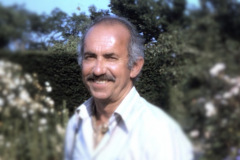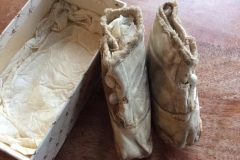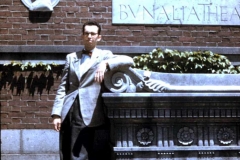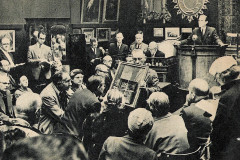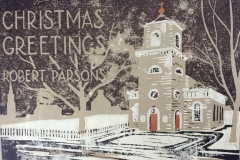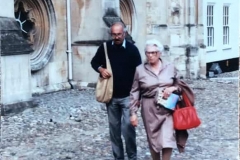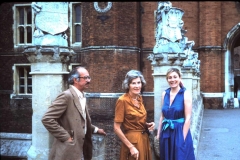Robert Parson, or Bob as he was known to most people was from Wichita Falls Texas, he came to England as soldier during WW II, after the war he returned to make England his home.
Robert Parsons, affectionately known as Bob, was born on August 2, 1920, in Ponca City, Oklahoma. He was the son of Frank Parsons, a petroleum geologist, and Rose Bodan, a music teacher. Bob's early years were marked by a happy childhood in Wichita Falls, Texas, where he developed an early interest in buildings and architecture. Bob's academic journey led him to the University of Southern California (USC), where he earned a Bachelor of Arts degree in June 1942. His studies were interrupted by World War II, during which he served as a corporal in the U.S. Army Air Forces. Bob participated in significant operations, including the Allied invasion of Normandy and the Battle of the Bulge. After the war, Bob resumed his education at the Harvard Graduate School of Design, where he studied under renowned architects I.M. Pei and Walter Gropius. He received his Bachelor of Architecture degree in 1950, which was later converted to a Master of Architecture. Bob's architectural knowledge and passion for restoration would shape his future endeavours. In 1971, Bob embarked on a monumental project that would define his legacy. He took on a thirty-year repairing lease for Newark Park, a run-down country house in the Cotswolds, owned by the National Trust. Bob's dedication to restoring Newark Park was unwavering. He transformed the neglected house and gardens, uncovering hidden architectural features and revitalising the property. Bob's efforts extended beyond the physical restoration of Newark Park. He fostered a sense of community and hospitality, welcoming friends, neighbours, and visitors to the estate. His work at Newark Park was recognised and appreciated by many, including the National Trust. Throughout his life, Bob maintained a love for travel, gardening, and the arts. He was an accomplished needleworker and a member of various preservation societies. Bob's passion for architecture and history was evident in his extensive travels and his commitment to preserving historic properties. In 1994, due to declining health, Bob moved to Hampstead, London, but his connection to Newark Park remained strong. He returned to Newark in 1997, where he spent his final years. Bob passed away on April 10, 2000, leaving behind a legacy of dedication, generosity, and a beautifully restored Newark Park.
